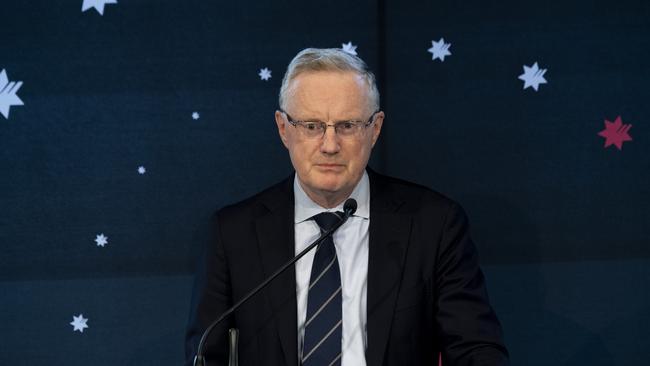Reserve Bank unlikely to revert to blockbuster interest rate hikes
Rapidly broadening inflation challenges the central bank’s view that Australia is different, but it will want to hold some firepower.

Australia’s hotter-than-expected inflation in the third quarter challenges the central bank’s view that the economy is somehow different from the rest of the world.
It was this sense of exceptionalism that led to the Reserve Bank of Australia’s decision to slow its interest rate hikes this month, wildly bucking the trend of other major central banks which continue to signal aggressive rates increases to smash inflation.
The RBA stunned markets on October 4 when it raised its key cash rate by only 25 basis points, slowing from its recent 50-basis-point increases.
It was a risky move for the RBA, given the possibility that inflation might be unexpectedly strong in the third quarter.
That’s exactly what happened.
Consumer prices rose 1.8 per cent on quarter and 7.3 per cent on year, its fastest pace since 1990, the Australian Bureau of Statistics said on Wednesday. Economists had forecast inflation of 1.6 per cent on quarter and 7.0 per cent on year.
Trimmed mean inflation, the RBA’s preferred measure of core inflation, was the highest since the series commenced in 2003, rising 6.1 per cent on year.
The RBA has been arguing that weak wages growth in Australia, compared with places like the US, means lower risk of entrenching high inflation in the country, giving policy makers more scope to keep rates low.
It’s not that the RBA is wrong about Australia’s relatively low wages growth; it is more that the inflation problem has broadened suddenly.
Ivan Colhoun, chief economist at National Australia Bank, said Australian core inflation is now above some US measures, while the RBA’s forecast for a peak in inflation around 7.75 per cent in the fourth quarter is set to be eclipsed.
Price pressures have clearly broadened beyond just elevated goods inflation, Colhoun said. Services inflation is now rising at its highest on-year rate since 2008, he added.
So as discussion around inflation has become more worrisome, the question on everybody’s lips is whether the RBA re-accelerates its tightening at its policy meeting on Tuesday.
It will almost certainly debate such a move but it is likely to stick with 25-basis-point increments for now.
The RBA will likely still feel that it has raised interest rates significantly since May, and the prospect of 25-basis-point increases stretching well into next year means it can still unleash a lot of firepower quickly.
RBA Deputy Governor Michele Bullock noted in a recent speech that the RBA is making monetary policy decisions 11 times a year so it is regularly discussing the evidence on the economy and has more flexibility on the size and timing of rate increases than most other central banks.
“It also means that if we increase interest rates at every meeting, we can potentially move much faster than overseas central banks,” she added.
So there’s little risk in the eyes of senior RBA officials that policy tightening will be too slow.
“The incremental change in the policy rate at recent meetings has been smaller than some other major central banks. However, our policy rate trajectory has been as steep, or steeper, than other central banks,” Bullock said last week.
Also keep in mind that the RBA slowed its rate increases amid rising concern about a coming international recession.
What could come at next week’s policy meeting is that the RBA will remind markets loudly that it may yet return to 50-basis-point hikes if inflationary conditions continue to worsen.
But that’s more a discussion for next year.
Dow Jones Newswires




To join the conversation, please log in. Don't have an account? Register
Join the conversation, you are commenting as Logout